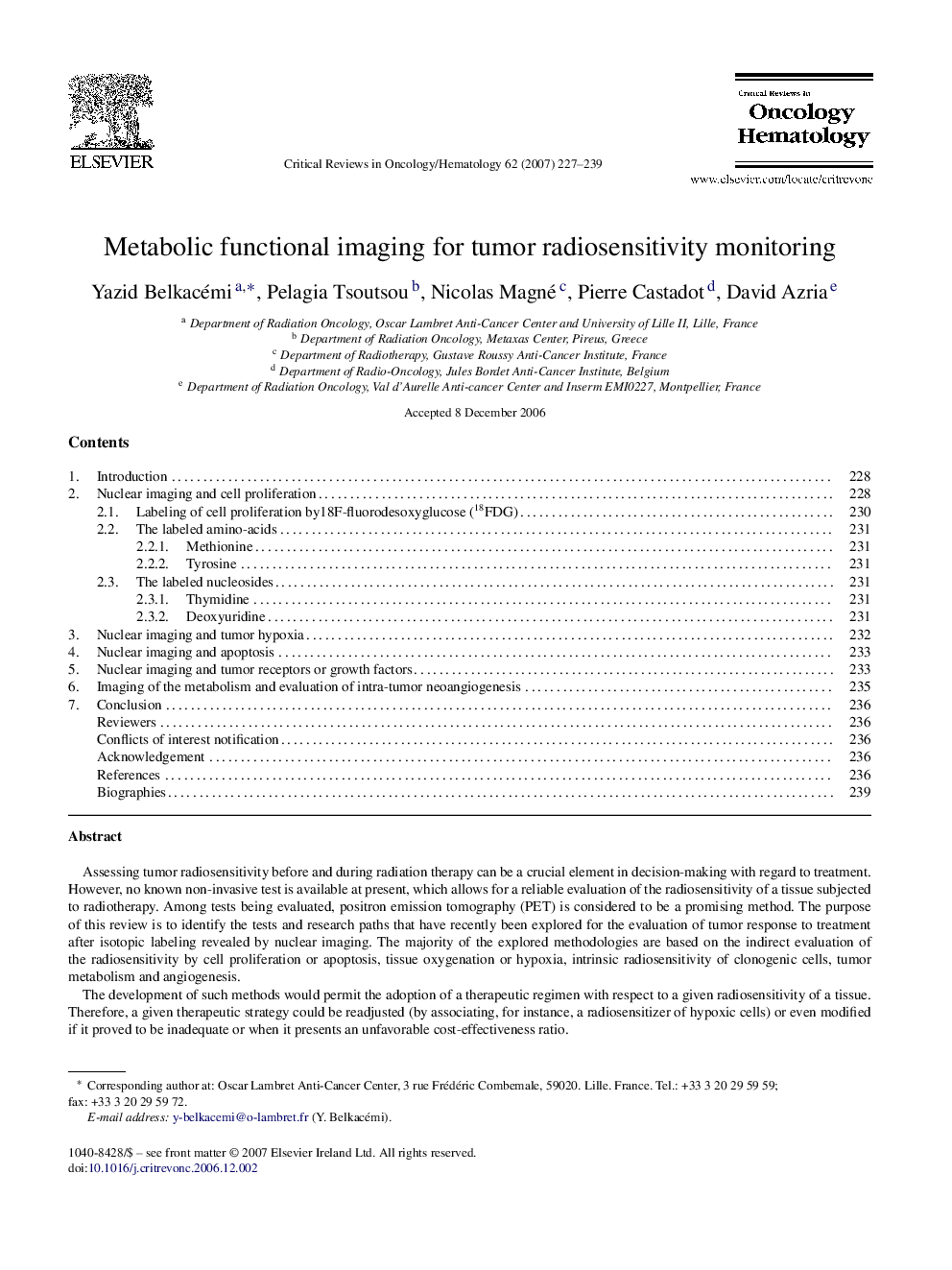| Article ID | Journal | Published Year | Pages | File Type |
|---|---|---|---|---|
| 3330411 | Critical Reviews in Oncology/Hematology | 2007 | 13 Pages |
Assessing tumor radiosensitivity before and during radiation therapy can be a crucial element in decision-making with regard to treatment. However, no known non-invasive test is available at present, which allows for a reliable evaluation of the radiosensitivity of a tissue subjected to radiotherapy. Among tests being evaluated, positron emission tomography (PET) is considered to be a promising method. The purpose of this review is to identify the tests and research paths that have recently been explored for the evaluation of tumor response to treatment after isotopic labeling revealed by nuclear imaging. The majority of the explored methodologies are based on the indirect evaluation of the radiosensitivity by cell proliferation or apoptosis, tissue oxygenation or hypoxia, intrinsic radiosensitivity of clonogenic cells, tumor metabolism and angiogenesis.The development of such methods would permit the adoption of a therapeutic regimen with respect to a given radiosensitivity of a tissue. Therefore, a given therapeutic strategy could be readjusted (by associating, for instance, a radiosensitizer of hypoxic cells) or even modified if it proved to be inadequate or when it presents an unfavorable cost-effectiveness ratio.We present here a critical review of the radiotracers revealed by nuclear imaging that are developed for radiosensitivity monitoring.
